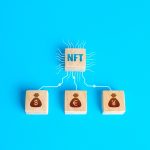The digital landscape is changing rapidly, and with it, the investment horizon for discerning traders and investors. Non-fungible tokens (NFTs) and cryptocurrencies have emerged as revolutionary assets, attracting a wave of interest from retail and institutional investors alike. If you are looking to dive into the world of upcoming NFTs and cryptocurrencies, it’s essential to have a strategic approach. This article outlines key strategies to navigate this volatile terrain effectively.
Understanding the Basics
Before diving into strategies, it’s important to understand the foundational elements of NFTs and cryptocurrencies:
-
Cryptocurrencies are digital or virtual currencies that use cryptography for security. They operate independently of a central authority, relying on blockchain technology. Examples include Bitcoin (BTC), Ethereum (ETH), and thousands of altcoins.
- NFTs are unique digital tokens that represent ownership of a specific item or asset, often art, music, or collectibles, on a blockchain. Unlike cryptocurrencies, NFTs cannot be exchanged on a one-to-one basis due to their unique properties.
1. Research and Due Diligence
Before investing in new cryptocurrencies or NFTs, thorough research is vital. Here’s how to do it:
-
Analyze Whitepapers: For new coins, the whitepaper is the core document outlining the project’s vision, technology, use cases, and team credentials. Assess whether the project addresses a tangible market need.
-
Existing Community and Interest: Explore forums like Reddit, Discord, and Twitter to gauge community sentiment. A robust, engaged community often indicates a project’s viability.
- Follow Influencers and Analysts: Industry experts and influencers can provide insights and trends that may influence your decisions.
2. Timing the Market
Timing can be critical when investing in digital assets. Consider these approaches:
-
Market Cycles: Understand the cyclical nature of cryptocurrency markets. Recognizing bullish and bearish trends can help you decide when to buy or sell.
-
Strategic Buying: Use methods like dollar-cost averaging (DCA), where you invest a fixed amount periodically, regardless of price fluctuations. This strategy mitigates the risks of market volatility.
- Watch for Launches: Stay informed about upcoming NFT drops or crypto launches. Tools like Discord channels or platforms like CoinMarketCap and NFT marketplaces can provide timely alerts.
3. Diversify Your Portfolio
Investing in a variety of assets helps spread risk. Here’s how to build a diversified portfolio:
-
Mixing Projects: Invest in a combination of established cryptocurrencies (like Bitcoin and Ethereum) and promising new projects. For NFTs, consider a balance between established artists or creators and emergent voices with potential.
-
Different Asset Classes: Beyond cryptocurrencies and NFTs, look at other forms of digital assets, such as tokenized real estate or decentralized finance (DeFi) projects.
- Risk Management: Allocate your investments based on your risk tolerance. Some may prefer higher-risk, high-reward NFTs, while others might gravitate toward stablecoins or blue-chip cryptos.
4. Stay Updated with Regulations
The regulatory landscape surrounding cryptocurrencies and NFTs is constantly evolving. Here are ways to stay compliant:
-
Understand Local Laws: Familiarize yourself with your country’s regulations regarding cryptocurrency and NFT transactions to avoid potential legal issues.
- Tax Obligations: Keep track of your transactions for tax purposes, as many countries treat profits from cryptocurrencies as capital gains.
5. Leverage Technology and Tools
Utilize various tools and technologies to optimize your trading strategies:
-
Trading Platforms: Use reliable exchanges and NFT marketplaces with transparent fee structures and user-friendly interfaces, such as Binance, Coinbase, OpenSea, and Rarible.
-
Portfolio Trackers: Tools like CoinGecko and Blockfolio can help you monitor price movements and diversify your investments effectively.
- NFT Analytics: Platforms like Nansen and CryptoSlam offer valuable data and analytics to track trends, volume, and emerging projects in the NFT space.
6. Participate in Community and Networking
Building relationships in the crypto and NFT community can provide growth opportunities:
-
Networking: Attend virtual and in-person conferences, webinars, or workshops. Building networks can lead to early access to valuable information about upcoming projects.
- Collaborations and Partnerships: Engage with emerging artists or developers. Sometimes, early partnerships can lead to exclusive insights or investments.
Conclusion
Investing in upcoming NFTs and cryptocurrencies presents both thrilling opportunities and inherent risks. By conducting diligent research, timing your entries and exits, diversifying your portfolio, complying with regulations, leveraging technology, and actively participating in the community, you can lay the groundwork for long-term success. As always, remember to approach this fast-paced world with caution, ensuring that you invest only what you can afford to lose. The future of finance is digital, and those who adapt to it will find their footing in this exciting landscape.




